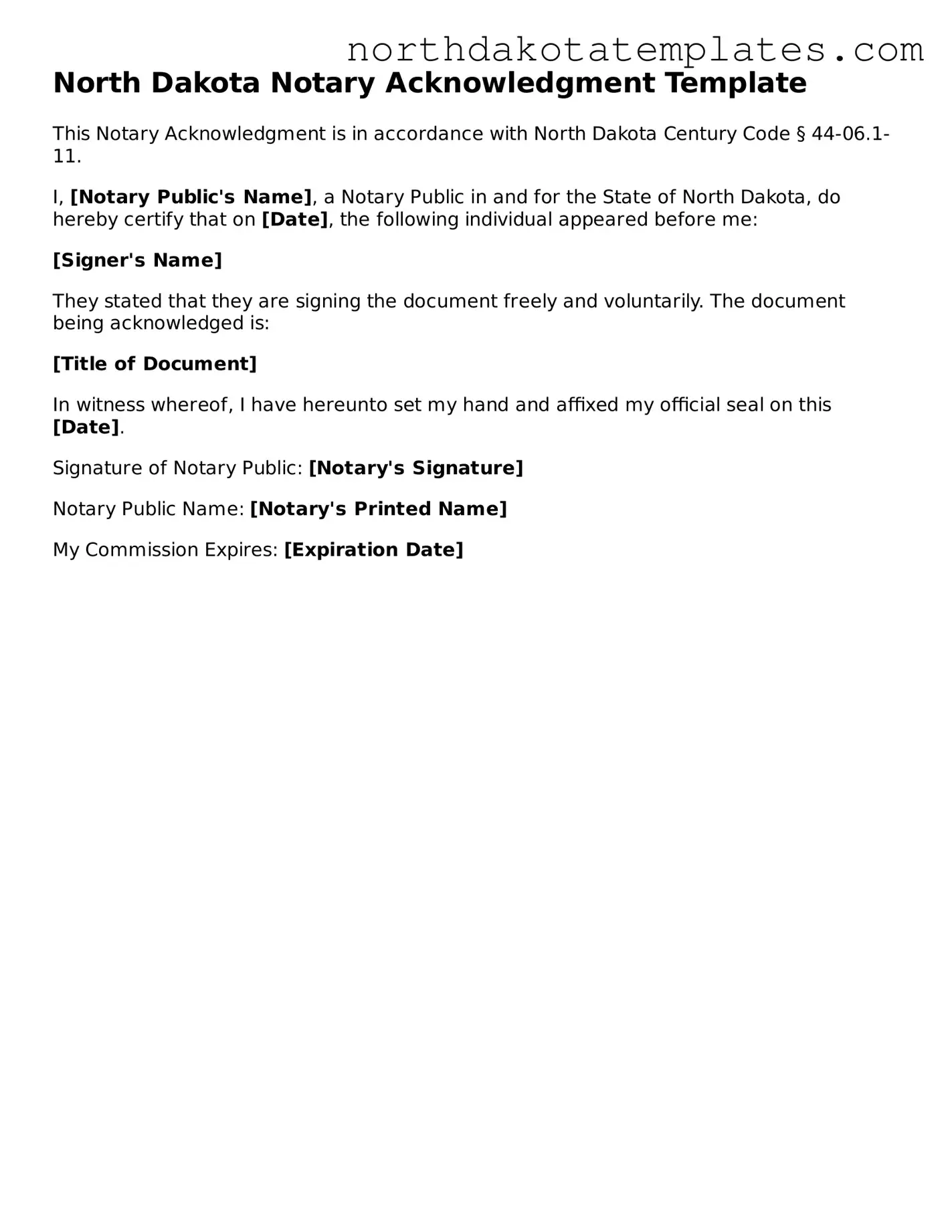What is a North Dakota Notary Acknowledgement form?
The North Dakota Notary Acknowledgement form is a legal document used to confirm that a person has willingly signed a document in the presence of a notary public. This form serves as proof that the signer is who they claim to be and that they have signed the document voluntarily. It is commonly used for various legal documents, including contracts, deeds, and affidavits, to ensure their validity and authenticity.
Why is a Notary Acknowledgement important?
A Notary Acknowledgement is crucial because it helps prevent fraud. By having a notary public witness the signing of a document, it adds an extra layer of security. This process ensures that the person signing is not under duress and is fully aware of what they are signing. Many institutions, such as banks or courts, require a notarized document for it to be accepted as valid.
Who can serve as a notary public in North Dakota?
In North Dakota, a notary public can be anyone who meets certain qualifications. Typically, applicants must be at least 18 years old, a resident of North Dakota or employed in the state, and pass a background check. Once appointed, notaries are authorized to perform notarial acts, including taking acknowledgments, administering oaths, and witnessing signatures.
How do I fill out the Notary Acknowledgement form?
Filling out the Notary Acknowledgement form involves a few straightforward steps. First, ensure that the signer is present and ready to sign the document. Next, the notary will complete the form by entering their name, the date, and the details of the document being acknowledged. The signer will then sign the document in front of the notary. Finally, the notary will sign and stamp the form, completing the process.
Is there a fee for notarization in North Dakota?
Yes, there is typically a fee for notarization in North Dakota. The maximum fee a notary can charge for most notarial acts is $5. However, fees may vary depending on the type of service provided. It’s always a good idea to check with the notary beforehand to understand any potential costs involved.
